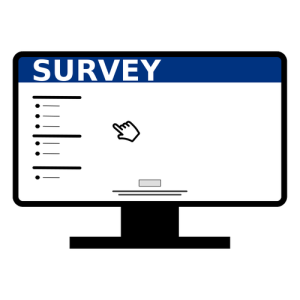Carefully considering the questions used in a questionnaire is one of the most important ways to get quality answers. Regardless of the type of marketing research, you are conducting, whether it is exploratory research such as focus groups or quantitative research that uses a formal survey instrument, this holds true. Even if you are informally asking a friend a question, if you think about this it is still true.
You have less of an opportunity to make a correction for a poorly designed question when you are sending out a survey by mail or email. I encourage you when you have to choose between email and mail, choose email and use an online survey when possible–it’s faster, cheaper, and has a lower opportunity for errors and a greater opportunity for amending a mistake if you happen to make one. Once your survey is mailed people don’t typically have a chance to ask you a clarifying question if you are not clear or if you asked the wrong question. If you get inadequate or ambiguous answers back – trust me you asked a poorly designed question.
At least, when you are conducting online focus groups or an in-person focus group, if the participant does not understand the question, they can ask the Focus Group Moderator to clarify it. This usually affords the Facilitator or Moderator an opportunity to ask probing questions to get more detailed learnings and becomes more of a discussion about how to get clarity around a topic.
Keep in mind that ultimately the old adage is true that, “There are no wrong answers.” However, there are answers to questions that were designed wrong.
Here are five tips for designing a survey questionnaire or just asking a question!
1) Bias. Is the question a leading question or not? To avoid introducing bias into your question -you should not lead the respondent in any one direction whether it is positive or negative. The whole reason you are conducting research is to obtain the respondent’s unbiased opinion.
2) Necessary. Is this question necessary? When you get this answer does it matter to me and my business or product or am I just ask ing because I didn’t know what else to say? – If that’s the answer, eliminate the question.
ing because I didn’t know what else to say? – If that’s the answer, eliminate the question.
3) Clear. Read the question to someone else and see if they can answer it. If you get an unexpected answer then you might have asked an ambiguous question.
4) Relevant. Determine if the question you are asking is congruent with your key objectives.
5) Actionable. If you get the answer to this question, can you do something about it? If yes, then go forward. If you can’t, then stop and focus on another question that you can do something with the response.
People appreciate it when people are considerate and asking a thoughtful question is a way to show others respect.
If you want to learn more about question design, we have two other resources for you:
1) This White Paper includes 13 Lucky Tips to use when designing surveys, “Survey Design and Tips on How to ask a Good Question”, which was originally posted as a guest blog on Free Ad Candy written by Lynnette Leathers, Mindspot Research CEO.
2) A top-notch research team really improves your odds. We have a team of research experts.
Call us today. Learn more here on our website or email us at info@mindspotresearch.com or call 407-730-4603 and your consultation is free!
by Lynnette Leathers CEO of Mindspot Research, a division of Mindspot, Inc.

